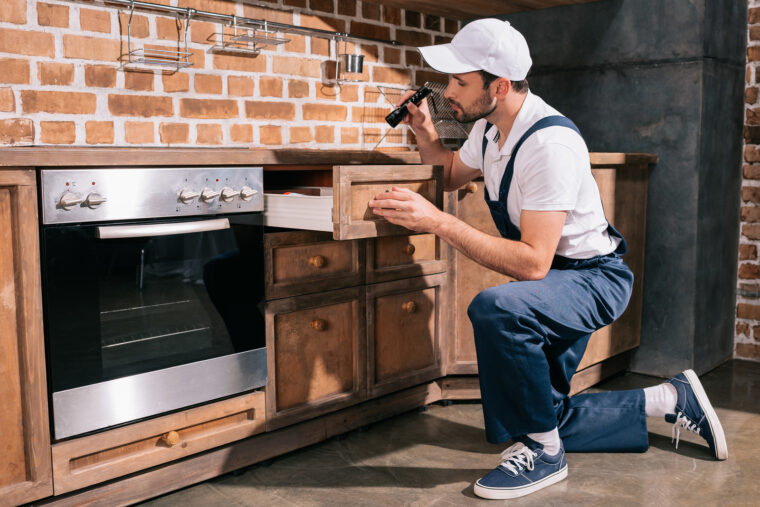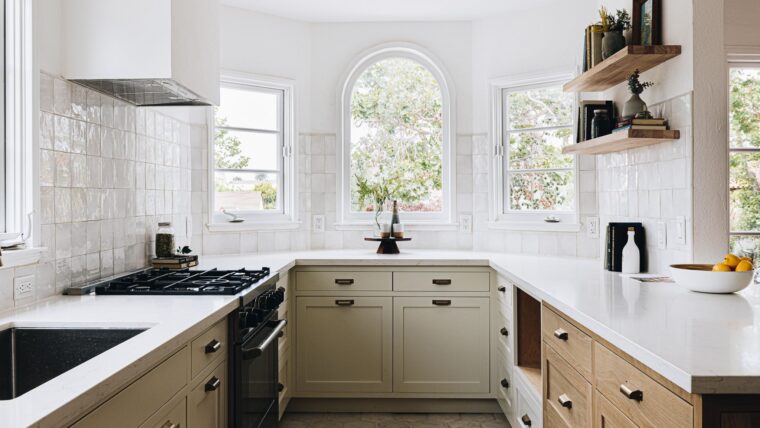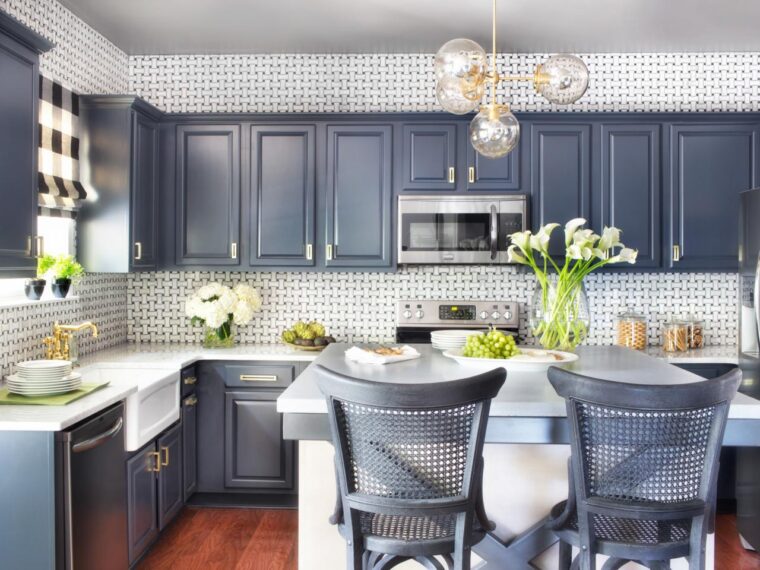Cabinets are the most important feature in any kitchen. Without the right set of cabinets, objects, containers and food ingredients cannot be kept in the right manner. Organizing a kitchen is the first thing that any cook will suggest as a measure to improve the quality and efficiency of the process of cooking.
Cabinets have always been made up of multiple materials including wood, acrylic, laminates, fibers and others. Amongst so many materials, the most usual ones are wood cabinets. However, if the cabinet is styled in an urban manner, cabinets could be made of fiber and acrylic. It is ideal to paint cabinets specifically because it elongates its life in the harsh conditions of the kitchen.
Preparing The Cabinets For Painting
1. Examining Cabinets

The very basic activity to perform is examining the cabinet that you wish to paint. The age of the cabinet must be considered as well. If it is a relatively new piece of furniture, and you simply want to change the color or design, it can be done simply by painting over the previous layer. However, in case the cabinets are old and the color is now bland, it might have to be removed or scraped off so that the newer layer can sit well on the surface.
2. Removing Pre Existing Paint
There are multiple ways to remove the paint that is already on the surface of the cabinets. One of those ways is to use a chemical solvent. Usually, such solvents contain a large proportion of ethyl alcohol that help in breaking down the old layer of paint and other fluids. After applying the solvent, you can simply wipe it or scrape it off depending upon the level to which it has been dissolved. Sometimes, the materials used in cabinet constructions can be harmful. In the late 1970s, lead was commonly used. Therefore, it is advisable to contact a professional for cabinet restoration which you may find here.
3. Cleaning The Interior
It may be a great opportunity for you to clean the interior when you decide to renovate the cabinets. All the contents within must be removed prior to the next few steps so that there is minimum collateral damage to the items. Cleaning will also remove any sort of oil and dust residue on the surface which might disrupt other processes. The doors must also be detached if possible. Doing so will reduce the time it takes to paint and manage cabinets.
4. Sanding And Smoothing

Before everything else, the surface must be smooth enough to proceed with. Sanding the surface that has to be repainted is essential. It is also vital to note that certain fibers and polymers should not be sanded with sanding machines as they tend to melt. You must do proper research before starting off. It is imperative to use different grades of sandpaper for unique results. Moreover, if a sanding machine is being used, the process is fastened incredibly. As mentioned earlier, it should be used only for wood and laminate based cabinets. You should even the edges properly as well.
5. Managing Damaged Areas
If there are any damaged areas in the cabinets, you should first fix them up. Often, termites and other insects house themselves in the corners of these woods. Therefore, fixing all of it will be essential. Sometimes, water and oil may cause harm to the wooden joints. These must be replaced or fixed before proceeding. If you try to move onto priming or repainting without fixing them, the functional life of the cabinet might fall below the standard. You can use plywood to fix damp portions of the cabinet. At the same time, if there are any holes, you can hammer a piece of wood ino it so that integrity is maintained. It can be sanded to even out.
6. Priming
Once the task of sanding and smoothing is complete alongside repairs, you should wipe everything clean. Saw dust should be removed so that it does not contaminate paint and primers. A good quality primer is what you should apply to the surface on which the paint will be brushed or sprayed upon. You should apply at least two layers of primer so that there are no crevices where the paint might seep into. A level surface is always easy to paint.
7. Selecting Paint

Choosing the paint can be a task for you. You must consider every option before deciding on the best design for your cabinets. The paint that you use is crucial because an inferior paint will not only ruin the look of the cabinets but will also waste your efforts. Usually, branded paints work best on different kinds of materials.
It is important that you refer to the directions for use of certain colors on different surfaces. Darker colors usually need more than three coatings. Lighter colors work with two to three coatings. It also depends upon the primer as to how much of the paint will be absorbed and retained over the drying period.
Finally, you may choose between liquid paints and spray paint cans. Spraying is quite easy and quick but can turn expensive as the device is costly. It usually gives the best results. When using the brush, you should also consider going through all textures well. The corners should never be left unpainted as it ruins the look. If the cabinet doors are hybrid and have a glass, you might want to consider covering it with paint resistant paper or cloth.
Conclusion
There are many things to know before repainting the cabinets. You can surely prepare your cabinets for painting but the process of repainting should only be done when the choice of design is final. You do not wish to have everything scattered while you are browsing for designs. Once you have made up your mind as to the color combinations, then only proceed with any of the preparations.
